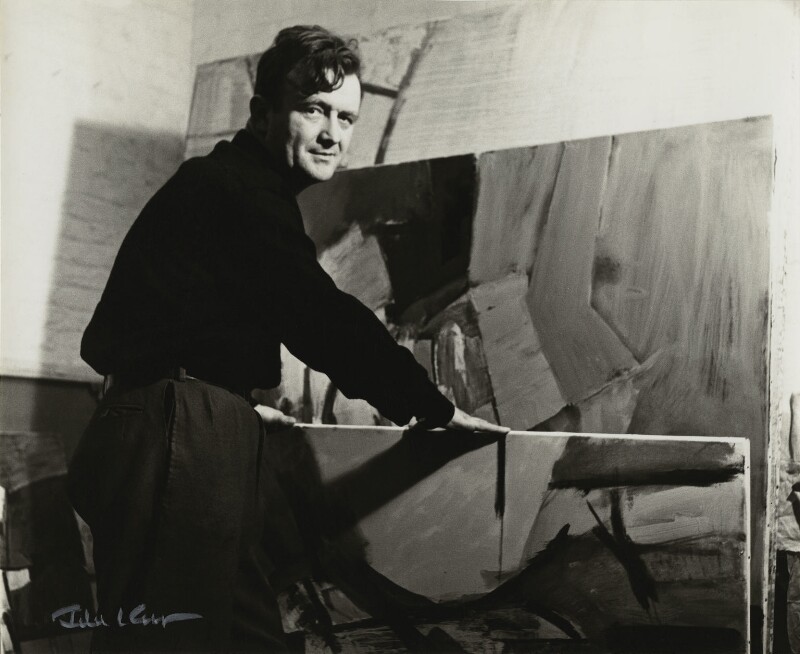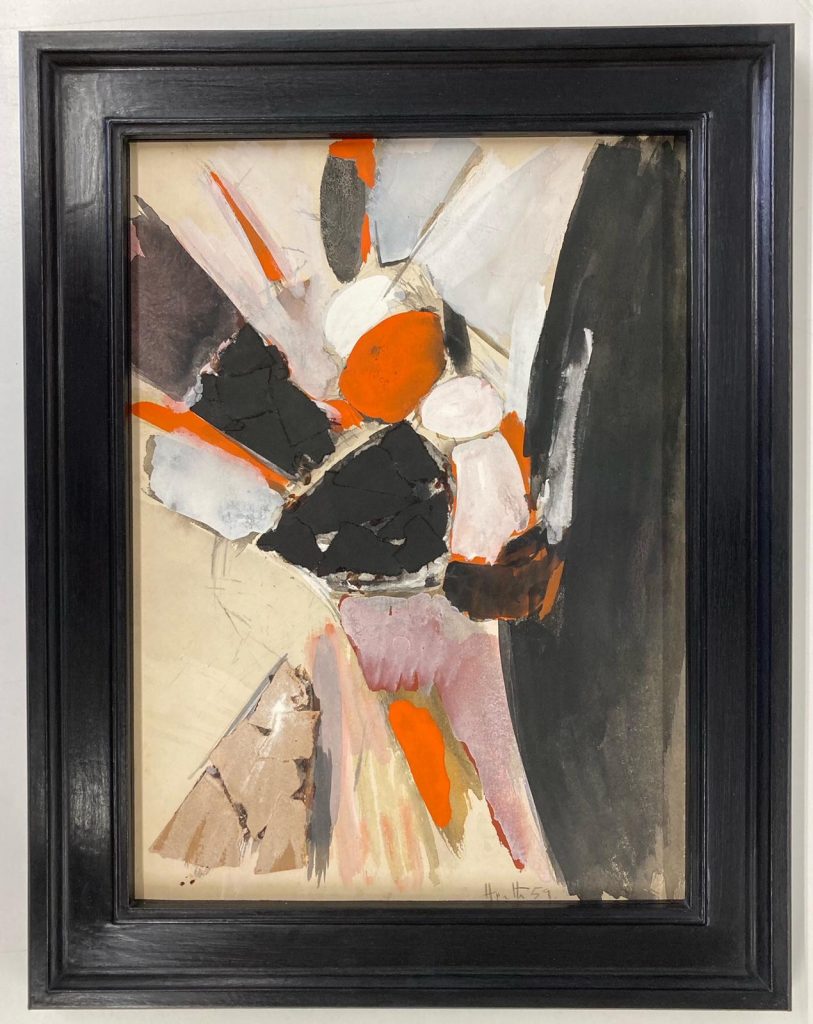
Adrian Heath
(1920-1992)
Adrian Heath was born in Burma in 1920. Arriving in England at the age of five, he studied painting in Cornwall before enrolling at Slade School of Art, where he came into the orbit of artists such as William Coldstream, Lawrence Gowing and Victor Pasmore.
During World War II he was imprisoned in the Bavarian prison camp Stalag 383, where he started experimenting with abstract forms and shapes whilst in solitary confinement following his attempt to escape. The war years proved crucial in the development of Heath’s analytic, abstract approach to form, which he always privileged over realism and figuration. Asked by the Stalag newspaper, Camp, what spiritual lesson captivity had taught him, Heath answered, “to observe at first hand how people of any background, education, temperament, intelligence and ability can respond to art and benefit from doing it and talking about it”.
After WWII, Heath returned to the Slade to complete his study under Randolph Schwabe. He then moved to France where he spent some time in Paris, and a year in Carcassone. Although Heath was to retain links with Cornwall throughout his life, the impact that London and Paris exercised on his artistic production shaped the future of his work, which grew out of a cross-fertilisation between the classical abstraction which was typical of London, and the romantic abstraction of St. Ives.
Upon his return to England, Heath joined The London Group, and his studio at Fitzroy Street soon became a meeting place for many intellectuals of the time. Heath was interested in art theory and wrote a manifesto-like text entitled Abstract Art, its Origins and Meaning, which was published at the same time as his first solo show was held at the Redfern Gallery in 1953. He served as Chairman of the Artists’ International Association between 1954 and 1964, and served on the board of the Arts Council of Great Britain (1964-67).
Between the 1960s and ‘80s, Heath’s work was often selected for inclusion in important survey shows, such as those organised by the British Council (British Art Today, which toured the USA in 1962), the Tate Gallery (St Ives 1939-64), and the Hayward Gallery (British Drawing, 1983).

